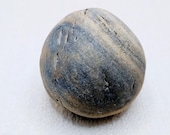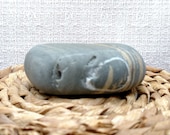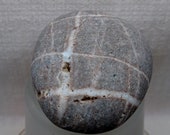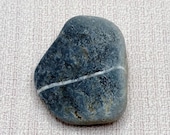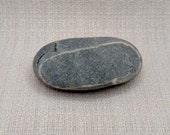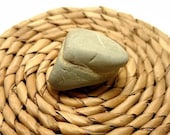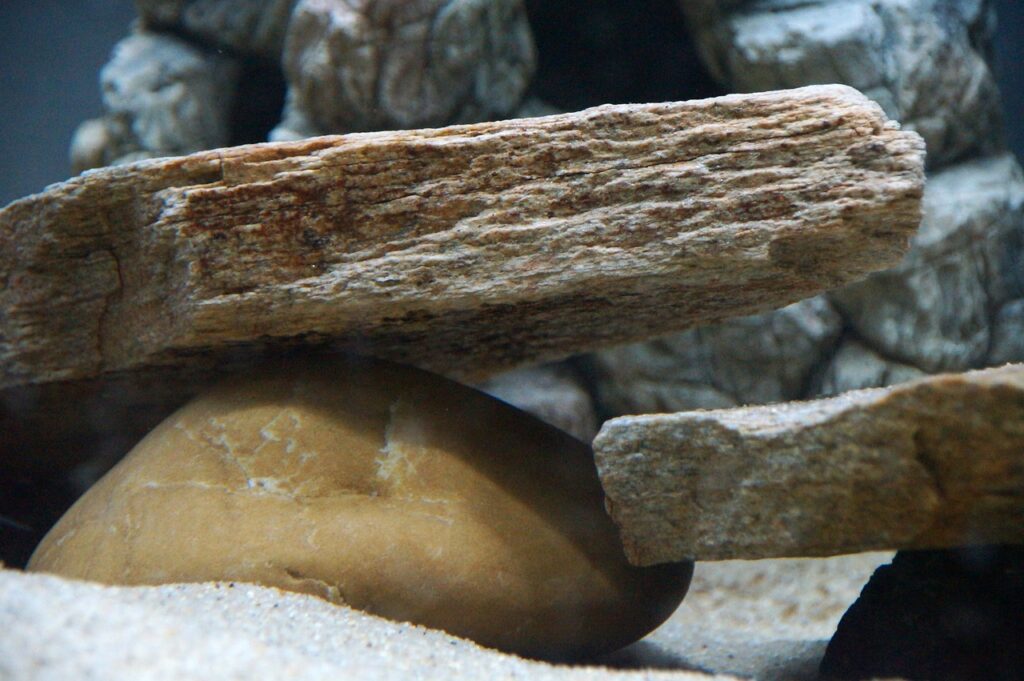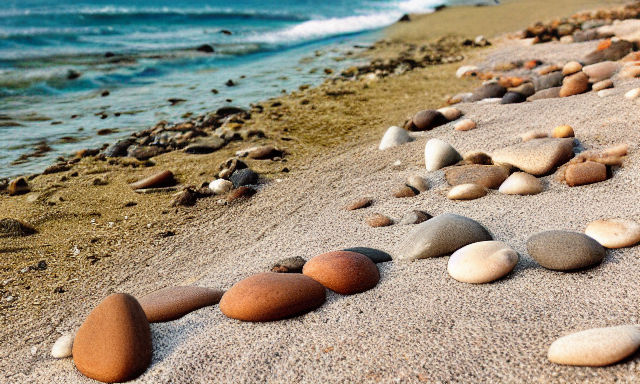Metamorphic Rocks
Metamorphic rocks, those hidden gems beneath the Earth’s surface, bear witness to a transformative journey shaped by intense heat and pressure. Unlike their igneous or sedimentary counterparts, metamorphic rocks are the survivors of a geological alchemy, where existing rocks undergo a metamorphosis, emerging with new characteristics and stories etched in their mineral structures.

The Essence of Metamorphic Formation
At the heart of metamorphic rocks lies a fascinating process. Picture rocks as actors in a geological drama, with heat and pressure as the scriptwriters and directors. The journey begins with a protolith, a precursor rock that, under the immense heat and pressure beneath the Earth’s crust, takes center stage in a metamorphic transformation. This process not only alters the physical characteristics but also weaves a unique geological tale into the very fabric of the rock.
Geological Significance in Northeast Coastal Regions
Now, let’s cast our gaze towards the Northeast coastal regions, a haven for geological diversity. Here, the dance of metamorphic rocks is particularly captivating. The ancient forces of the Earth, manifested in tectonic movements and metamorphic events, have endowed this region with a geological tapestry rich in metamorphic wonders.
Prevalence in Coastal Beauty
The Northeast, with its rugged coastlines and picturesque landscapes, is not just a visual treat but a geological treasure trove. Metamorphic rocks, with their intricate patterns and enduring resilience, find a natural home along these shores. From the intricate shores of Maine to the sandy beaches of Cape Cod, the Northeastern coastal regions showcase the prevalence and diversity of metamorphic rocks, inviting us to delve into their secrets.
An Invitation to Discovery
As we set out on this journey to uncover the wonders of metamorphic rocks, keep in mind the coastal beauty of the Northeast—a region where the Earth’s transformative processes are on full display. Our exploration will reveal the unique characteristics, types, and geological contexts of metamorphic rocks, inviting you to appreciate the enduring tales written in the rocky landscapes of the Northeast.
Coastal Beach Stones
Formation of Metamorphic Rocks
The Transformation Dance
Metamorphic rocks emerge from a geological ballet, a transformative dance orchestrated by the Earth’s inner forces. Imagine this: ancient rocks, known as protoliths, taking center stage in a metamorphic journey. These protoliths, be they sedimentary, igneous, or even existing metamorphic rocks, undergo a profound transformation, akin to a caterpillar becoming a butterfly.
Introduction to Protoliths
Protoliths, the unsung heroes of metamorphic rocks, are the starting point of this geological tale. These precursor rocks, shaped by their own unique history, become the raw material for the Earth’s creative metamorphic process. As they dive deeper into the Earth’s crust, they encounter the geological cauldron—a place of intense heat and pressure.
The Metamorphic Journey
As the protoliths venture into this subterranean realm, the geological ballet begins. Heat acts as the choreographer, infusing energy into the rocks, while pressure adds its own dramatic flair. The minerals within the protoliths respond to this cosmic dance, rearranging themselves to create entirely new patterns and structures. This metamorphic journey, sculpted by the dynamic duo of heat and pressure, gives birth to metamorphic rocks.
How Metamorphic Rocks Form
The process of metamorphic rock formation is an intricate tale of geological craftsmanship. To answer the question of how metamorphic rocks form, we must look into the depths of the Earth’s crust, where the metamorphic magic unfolds.
The Crucial Processes
Metamorphic rocks come into existence through processes like recrystallization, foliation, and mineralogical changes. Recrystallization involves the creation of new mineral grains, offering a fresh identity to the rock. Foliation, on the other hand, brings in layering and alignment, showcasing the directional influence of pressure. Understanding these processes unravels the secrets behind the birth of metamorphic rocks.
Geologic Insights
The Earth, acting as the grand alchemist, transforms existing rocks through a delicate interplay of temperature, pressure, and time. This section delves into the intricate details of this transformational journey, providing insights into the geological mechanisms that lead to the creation of metamorphic rocks.
Characteristics of Metamorphic Rocks
Metamorphic rocks bear distinct characteristics that set them apart in the geological symphony. In this exploration, we unravel the unique features that define metamorphic rocks and make them geological marvels.
Textural Marvels
One of the defining characteristics is texture. Metamorphic rocks exhibit a diverse range of textures, from the pronounced layering of foliated rocks to the uniformity of non-foliated rocks. Understanding these textures opens a window into the conditions and processes that shaped these rocks.
Composition Secrets
Beyond texture, the mineral composition of metamorphic rocks tells a tale of its own. Certain minerals are indicative of specific metamorphic conditions, allowing geologists to decipher the rock’s history. Here, we lift the veil on the secrets hidden in the mineralogical composition of metamorphic rocks.
Geological Tales Encoded
Metamorphic rocks become geological storytellers, recording their transformative journey in their characteristics. By decoding these tales, we gain not just a glimpse into the Earth’s history but an appreciation for the dynamic processes that continue to shape our planet.
Wishing Rocks
Types and Examples
Classification and Types
Metamorphic rocks, a diverse family in the geological realm, come in various types, each telling a unique story of transformation. Understanding their classification provides a roadmap to decoding the Earth’s metamorphic history.
Types
Metamorphic rocks fall into broad categories based on their texture, mineral composition, and geological context. This section takes a panoramic view, introducing readers to the major types, from the intricately layered foliated rocks to the more homogeneous non-foliated counterparts.
Classification
What makes a rock foliated or non-foliated? How do geologists classify these rocks based on their origin and features? Here, we delve into the classification criteria, shedding light on the geological principles that categorize metamorphic rocks.
Foliated Metamorphic Rocks
Foliated metamorphic rocks, nature’s exquisite layer-cakes, exhibit a remarkable texture that speaks volumes about their geological history.
The Layered Beauty
We explore the characteristics of foliated rocks, where mineral grains align in discernible layers. The process of foliation, influenced by directional pressure, imparts a unique visual appeal to these rocks. Examples abound, from the finely banded gneiss to the visually dramatic schist.
Layers
How do these layers form, and what role does pressure play in their creation? This section answers these questions, providing a glimpse into the dynamic geological forces that give rise to the layered elegance of foliated metamorphic rocks.
Non-Foliated Metamorphic Rocks
In contrast to their layered counterparts, non-foliated metamorphic rocks boast a more uniform structure, adding a different dimension to the metamorphic narrative.
Homogeneity in Structure
The characteristics of non-foliated rocks, where mineral grains lack a preferred alignment, contribute to a distinct appearance. What sets them apart from their foliated counterparts? We unravel the geological processes that lead to the formation of these structurally homogeneous rocks, such as the widely used marble and the durable quartzite.
Contrasting Traits
Comparing and contrasting foliated and non-foliated rocks highlights the subtle nuances that make each type unique. By understanding these differences, readers gain insights into the diverse ways metamorphic rocks manifest in the Earth’s crust.
Examples of Metamorphic Rocks
Concrete examples bring the abstract world of geology to life. In this showcase, we present a gallery of metamorphic rock examples, each with its own geological tale.
Glimpses into Diversity
From the iconic slate to the visually striking amphibolite, we explore a range of metamorphic rocks. Each example is a snapshot of geological history, offering a tangible connection to the Earth’s transformative processes.
Stories in Stone
What can we learn from examining specific rocks? What clues do they provide about the conditions under which they formed? This section decodes the stories embedded in metamorphic rocks, inviting readers to appreciate the rich tapestry of Earth’s geological history.
Balancing Rocks – Cairns
Identification and Characteristics
Texture and Identification
Identifying metamorphic rocks is akin to reading a geological fingerprint, and texture plays a crucial role in this detective work.
The Geological Fingerprint
Texture refers to the arrangement and size of mineral grains within a rock. For metamorphic rocks, this arrangement is a key identifier. In this segment, we delve into the significance of texture in the world of geological identification. From the fine grains of slate to the coarse texture of gneiss, understanding these textures becomes a skillful art of deciphering the Earth’s geological language.
Decoding the Puzzle
How do geologists use texture to identify metamorphic rocks? What clues does the texture provide about the rock’s journey through intense heat and pressure? This section provides answers to these questions, offering readers a glimpse into the detective work that geologists undertake to unravel the mysteries of metamorphic rocks.
Banding in Metamorphic Rocks
Banding in metamorphic rocks adds a visual rhythm to their narrative, creating distinct patterns that hint at their geological history.
The Visual Symphony
Certain metamorphic rocks exhibit banding, where mineral layers align to create visually striking patterns. We explore the phenomenon of banding, looking at examples like the rhythmic layers of gneiss or the alternating light and dark bands of migmatite.
Geological Harmonies
What geological processes lead to the formation of these bands? How can the study of these patterns enhance our understanding of the Earth’s crustal dynamics? This section answers these questions, providing a deeper appreciation for the geological harmonies embedded in banding metamorphic rocks.
Properties and Characteristics
Beyond their visual aesthetics, metamorphic rocks possess distinct properties that contribute to their identification and classification.
Hardness and Color Palette
Hardness, a measure of resistance to abrasion, varies across different metamorphic rocks. Additionally, the color palette, influenced by mineral composition, adds another layer to their visual allure. This section explores how hardness and color become signatures in the identification of metamorphic rocks.
The Palette of Nature
What do the colors of metamorphic rocks indicate about their mineral composition? How does hardness relate to the geological processes that shaped these rocks? These questions find answers here, as we uncover the geological tales told by the properties and characteristics of metamorphic rocks.
Coastal Beach Stones
Geological Context
Where Metamorphic Rocks Form
Metamorphic rocks, like silent storytellers, bear the imprints of their geological origins. In this segment, we embark on a journey to uncover the specific landscapes where these rocks find their form.
Coastal Chronicles
The Northeastern coastal regions play a starring role in this geological saga. Why does this area, with its rhythmic tides and salty breeze, become a preferred canvas for the metamorphic transformation? By answering questions like “Where are metamorphic rocks found?” and delving into the specifics of coastal formations, we connect the dots between geological processes and the scenic beauty of coastal landscapes.
The Dance of Elements
Geological processes, intricate as a dance, unfold in specific environments. What are the key factors that determine where metamorphic rocks take shape? The interplay of heat, pressure, and existing rock types creates the geological symphony. This section unravels the factors that turn ordinary rocks into the mesmerizing tales etched in metamorphic formations.
Formation Factors
Metamorphic rocks are sculpted by the hands of geological artisans — heat and pressure. Understanding the factors contributing to this transformation unveils the geological forces shaping our planet’s crust.
The Metamorphic Recipe
What alchemy of factors contributes to the metamorphic transformation? From the heat generated by tectonic forces to the immense pressure exerted during Earth’s geological processes, we explore the recipe that turns sedimentary and igneous rocks into metamorphic marvels.
Changing the Earth’s Skin
How do these factors interact, and what changes do they induce in the Earth’s crust? This section paints a vivid picture of the geological ballet occurring beneath our feet. It’s a narrative of continents colliding, of subduction zones where tectonic plates sink, and of the Earth’s ever-evolving skin undergoing transformative changes.
In this exploration of geological context, we bridge the gap between the abstract forces shaping rocks and the tangible landscapes where these rocks become a geological testament to the Earth’s dynamic history.
Fun Facts:
Metamorphic rocks, beyond their geological significance, hide intriguing secrets that add a layer of fascination to their story.
Rocks with Tales
Metamorphic rocks are the storytellers of the Earth’s history. Each layer, each mineral, whispers tales of ancient landscapes, cataclysmic events, and the slow dance of geological forces. From the colorful hues of schist to the dazzling reflections of mica, these rocks hold stories waiting to be deciphered.
Time Travelers
Ever held a metamorphic rock and felt a connection to a distant past? These rocks are time travelers, shaped by processes taking millions of years. It’s a humbling experience to hold a piece of the Earth’s history, a tangible link to epochs long gone.
The Dynamic Duo: Heat and Pressure
Metamorphic rocks owe their existence to the dynamic duo of heat and pressure. Imagine rocks undergoing a spa day, where intense pressure massages their structure, and heat rejuvenates them into entirely new forms. It’s a transformative experience happening deep within the Earth’s embrace.
Rocks on the Move
Metamorphic rocks are not stationary; they are wanderers. The geological forces that birth them often propel them towards the surface. Some, like mica schist, find their way to coastal regions, becoming treasures waiting to be discovered by beachcombers and enthusiasts.
The world of metamorphic rocks is a captivating blend of geological processes, scenic beauty, and fascinating tales. From the transformation dance deep within the Earth to the coastal wonders of the Northeast, these rocks invite us to explore the Earth’s dynamic history.
As we unravel the unique characteristics, types, and geological contexts of metamorphic rocks, we realize that each metamorphic rock is a unique chapter in the Earth’s storybook. Whether you’re a geology enthusiast or a casual beachcomber, there’s something enchanting about holding a piece of the Earth’s history in your hands.
So, next time you encounter a metamorphic rock, remember, it’s not just a stone; it’s a storyteller, a time traveler, and a testament to the ever-changing canvas of our planet. Embrace the allure of metamorphic rocks, and let their geological tales inspire your curiosity about the wonders of the Earth.
Frequently Asked Questions
What is a Metamorphic Rock?
Metamorphic rocks are a category of rocks that form through the transformation of pre-existing rocks (protoliths) due to intense heat and pressure beneath the Earth’s surface. This metamorphic process leads to changes in mineral composition, texture, and structure, resulting in rocks with unique characteristics distinct from their original form.
What Does a Metamorphic Rock Look Like?
A: Metamorphic rocks exhibit a diverse range of appearances, largely determined by factors such as mineral composition, texture, and the specific processes of their formation. Here are some common features:
Texture:
- Foliated Rocks: Display a layered or banded appearance due to aligned mineral grains. Examples include slate, schist, and gneiss.
- Non-Foliated Rocks: Have a more uniform structure with mineral grains lacking preferred alignment. Marble and quartzite are examples.
Color:
- Varied Hues: Metamorphic rocks come in an array of colors depending on their mineral content. Schist, for instance, can have hues ranging from green to red, while marble is often white or light-colored.
Shine:
- Luster: Some metamorphic rocks, like schist, may exhibit a shiny or reflective surface due to the presence of minerals like mica.
Hardness:
- Resistance: Metamorphic rocks vary in hardness. For example, marble is relatively soft and can be easily scratched, while quartzite is much harder.
Unique Patterns:
- Distinctive Markings: Certain rocks, such as gneiss, showcase unique patterns and banding, adding visual interest.
In essence, the appearance of a metamorphic rock is a result of the geological processes it has undergone and the specific minerals involved in its formation.
How Are Metamorphic Rocks Formed?
Metamorphic rocks form through a process involving intense heat and pressure acting on existing rocks beneath the Earth’s surface. Here’s a brief overview:
- Protolith Formation: Starts with a protolith, which can be a sedimentary, igneous, or existing metamorphic rock.
- Burial: The protolith is buried beneath layers of sediment, increasing temperature and pressure.
- Metamorphic Processes: Heat and pressure cause minerals in the protolith to recrystallize, align, and reorganize, resulting in a new rock with distinct characteristics.
- Types of Metamorphism: Different types include contact metamorphism (due to proximity to molten magma) and regional metamorphism (caused by tectonic forces).
The specific minerals present, the duration of heat and pressure exposure, and the type of protolith determine the unique attributes of the resulting metamorphic rock.
Where Can Metamorphic Rocks Be Found?
Metamorphic rocks are distributed worldwide, with their occurrence closely tied to geological processes. Common locations include mountain ranges, where tectonic forces exert pressure, and regions with past volcanic activity. Coastal areas, like the Northeastern United States, often feature metamorphic rocks due to their dynamic geological history.
Can Metamorphic Rocks Change Over Time?
Metamorphic rocks are, in a sense, snapshots of a specific geological moment. While they can endure for millions of years, further changes are more likely to occur over geological timescales. Factors such as erosion, weathering, and additional metamorphic events could contribute to alterations in their appearance and composition.
Can Metamorphic Rocks Contain Fossils?
Generally, metamorphic rocks are not conducive to preserving fossils. The intense heat and pressure involved in their formation tend to destroy any pre-existing fossils present in the original rocks (protoliths). Sedimentary rocks are typically better for fossil preservation.
Are All Mountains Made of Metamorphic Rocks?
While many mountain ranges contain metamorphic rocks, not all mountains are exclusively composed of them. Mountain formation often involves a complex interplay of tectonic forces, including the uplift of sedimentary, igneous, and metamorphic rocks. The types of rocks present depend on the geological history of the region.
How Can I Identify a Metamorphic Rock?
Identifying metamorphic rocks involves considering various characteristics:
- Texture: Foliated rocks show layering, while non-foliated rocks have a more uniform appearance.
- Mineral Composition: Specific minerals present can indicate the type of metamorphic rock.
- Color: Colors vary, providing clues to the minerals involved.
- Hardness: Testing hardness with simple tools can help distinguish between different rocks.
A geologist may use a combination of these factors to identify a particular metamorphic rock.
Can Metamorphic Rocks Be Used for Practical Purposes?
Yes, metamorphic rocks have various practical applications. For example:
- Marble: Used in sculpture and building materials.
- Slate: Valued for roofing tiles and as a writing surface.
- Quartzite: Often employed as a durable construction material.
The unique qualities of different metamorphic rocks make them valuable in various industries.
Do Metamorphic Rocks Erode Faster or Slower Than Other Rocks?
Erosion rates depend on factors such as rock hardness and the local environment. While some metamorphic rocks are hard and resistant to weathering, others, like schist, may be more susceptible. The presence of minerals and the specific geological history contribute to the erosion characteristics of a metamorphic rock.
Can You Find Metamorphic Rocks on the Beach?
Yes, especially in coastal regions with a history of geological activity. Waves and tides can bring metamorphic rocks, like schist or gneiss, to the beach. Beachcombers may discover these rocks, polished by the sea, offering a glimpse into the geological processes shaping the Earth.





